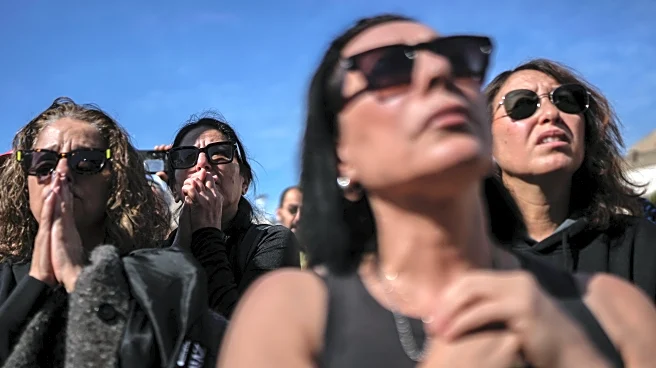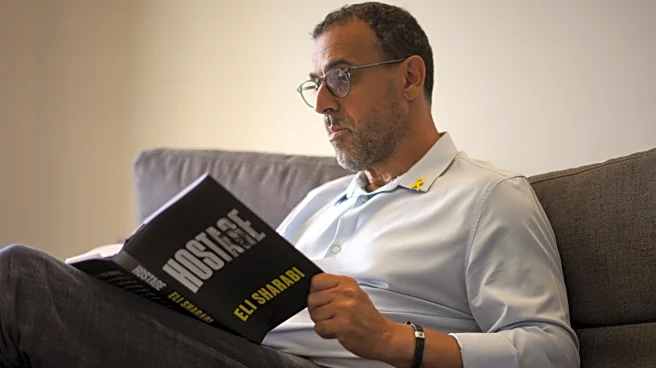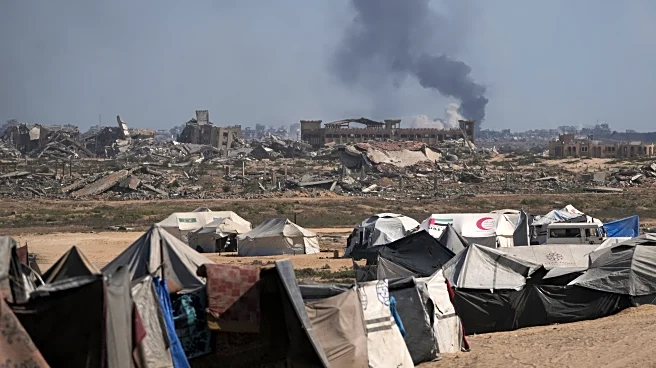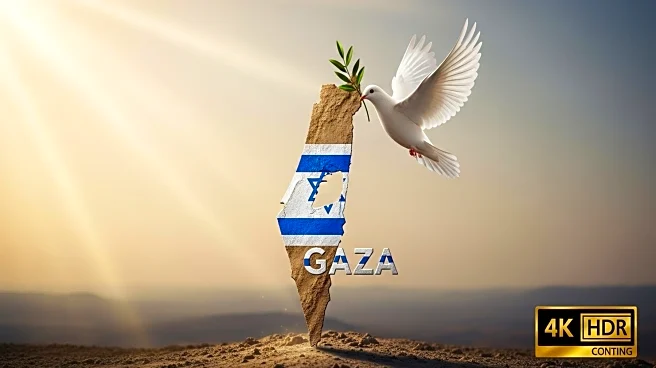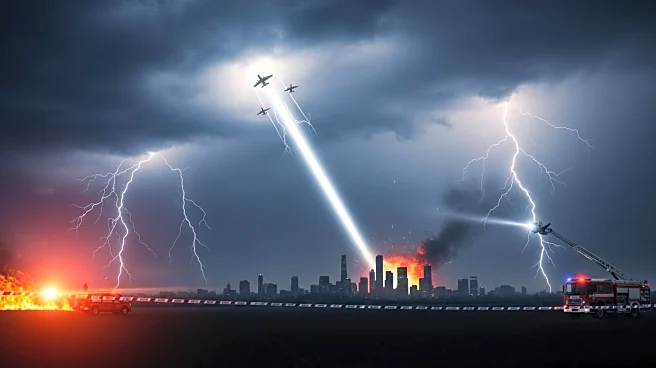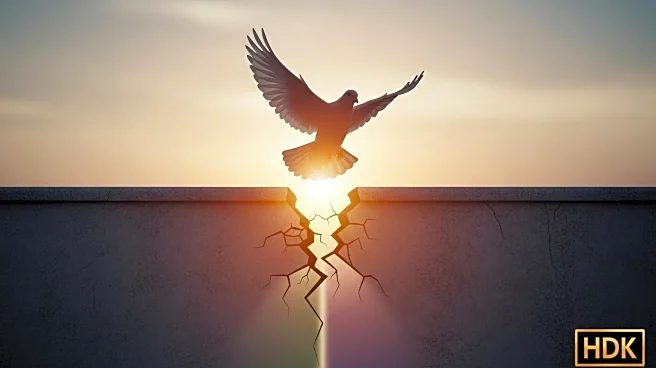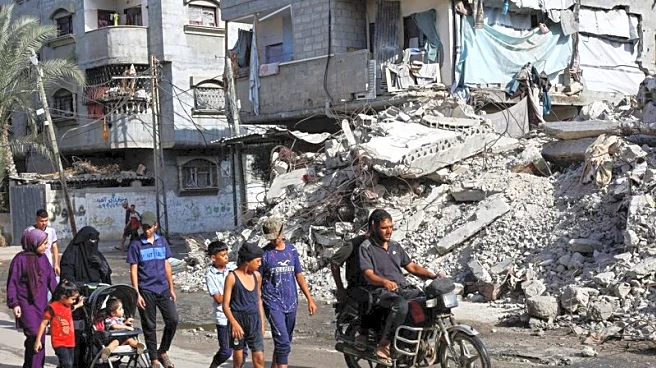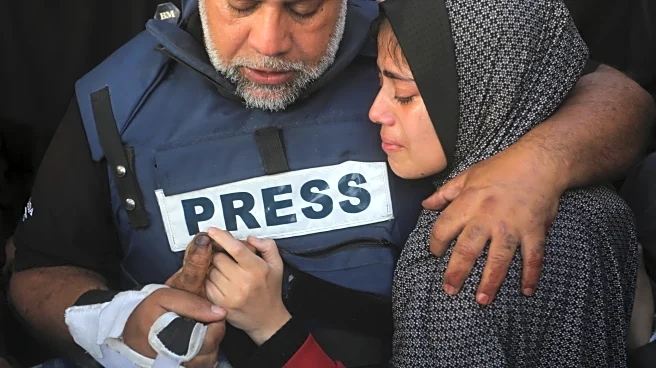What's Happening?
The Associated Press has released a series of photographs documenting the ongoing conflict between Israel and Hamas, which began two years ago when Hamas-led militants launched an attack on Israel. The conflict has resulted in significant casualties and destruction on both sides. The photographs capture the aftermath of the initial attack, which left around 1,200 people dead and 251 abducted, with ongoing violence leading to the deaths of over 67,000 Palestinians, according to Gaza's Health Ministry. The images depict the devastation in Gaza, including airstrikes, funerals, and the displacement of hundreds of thousands of Palestinians. The conflict has also seen Israeli airstrikes and ground operations, with significant loss of life and property on both sides.
Why It's Important?
The conflict between Israel and Hamas has significant implications for regional stability and international relations. The high civilian toll and humanitarian crisis in Gaza have drawn global attention and criticism, impacting diplomatic relations and international aid efforts. The ongoing violence has strained Israel's relations with neighboring countries and affected its internal politics, with public protests and calls for government accountability. The humanitarian situation in Gaza, exacerbated by blockades and military actions, poses challenges for international organizations and governments seeking to provide aid and mediate peace. The conflict's continuation underscores the complexities of achieving a lasting resolution in the region.
What's Next?
The future of the Israel-Hamas conflict remains uncertain, with potential for further escalation or diplomatic efforts to broker peace. International stakeholders, including the United Nations and various governments, may increase pressure for ceasefires and negotiations. Humanitarian organizations are likely to continue advocating for increased access to aid and relief for affected populations. The conflict's resolution will require addressing underlying political and territorial disputes, with potential shifts in regional alliances and policies. Continued monitoring and reporting by media and international bodies will be crucial in shaping public perception and policy responses.
Beyond the Headlines
The conflict has broader implications for media coverage and the safety of journalists, as evidenced by the deaths of journalists covering the war. The ethical challenges of reporting in conflict zones highlight the need for responsible journalism and protection of press freedom. The conflict also raises questions about the role of international law and human rights in wartime, with potential long-term impacts on global norms and accountability mechanisms. The cultural and historical dimensions of the conflict continue to influence narratives and perceptions, affecting peacebuilding efforts and reconciliation processes.

